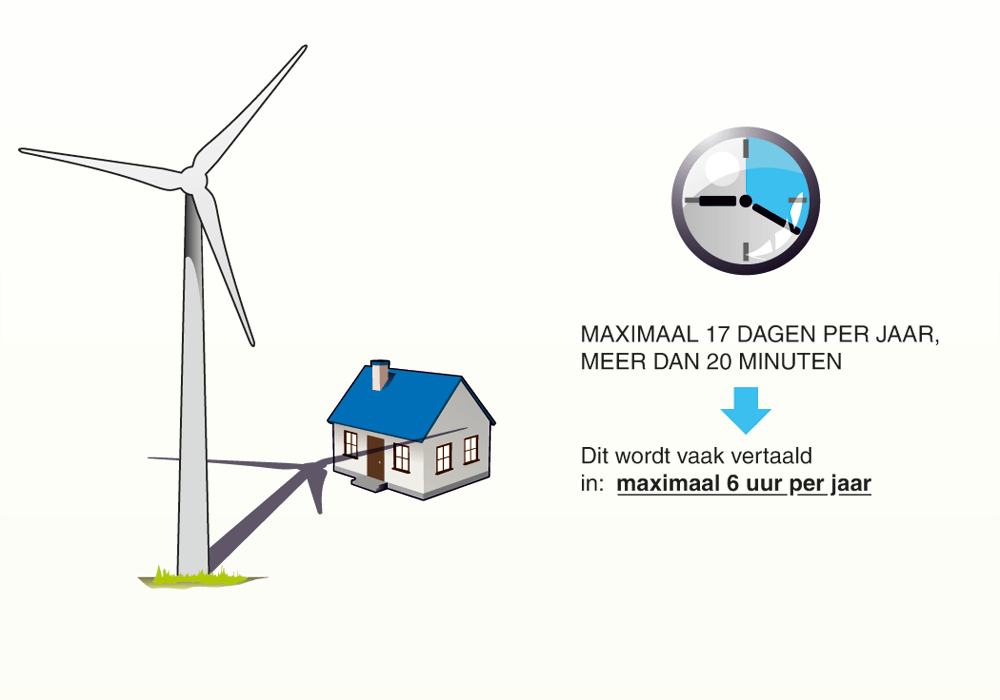Pondera provides reports on the shadow flicker of wind turbines and the resulting effects on homes in the area. We perform extensive calculations with the most recent software tools. Pondera has extensive experience with both existing tools and methods like WindPro©, but also relies on self-developed tools to supply you with more in-depth calculations unique to the market.
There are several different levels of reports or analysis that we can perform according to the needs of your planning or budget:
- A global exploratory analysis using rule-of-thumb distances to and alignment of homes and wind turbine sizes. This can serve as a basis for a feasibility study or environmental impact assessment;
- An extensive shadow flicker study based on model calculations (WindPro©) which also covers such aspects as calendar and weather conditions, cumulative effects and mitigating measures. This can form the basis of an environmental impact assessment, spatial plan or permit application;
- Highly detailed extensive analysis based on our own weather models and impact calculations. This method is often used on a per building basis and considers window sizes, orientation and possible mitigating measures (like barriers or screens). Calculations are performed on an actual perceived meteorologic condition instead of using averages giving an in-depth look at the historically occurring shadow flicker used to predict future expectations.
We now have experience in more than 200 projects. With our extensive knowledge of the process, we can ensure that the results of shadow flicker reports align with the respected rules set by the respective governments.
What is shadow flicker?
The rotating blades of wind turbines can cast a moving shadow on their surroundings due to the position of the sun behind the blades. This rotating projection of a shadow on a window is often called shadow flicker due to its on and off effect in enclosed spaces. The standards and maximum durations for shadow flicker are often defined by governmental bodies. Norms often state that wind turbines must be equipped with an automatic shutdown if shadow flicker occurs in the vicinity of sensitive objects (such as homes). In the Netherlands the maximum allowable amount of shadow flicker is no more than 17 days with more than 20 minutes of shadow flicker duration during the day in an averagely sunny year.
The figure below shows a visual representation of shadow flicker and the standard rule applied in the Netherlands. The maximum amount in the Netherlands is often translated into a maximum of six hours per year.
The figure below shows shadow flicker and the standard schematic.
MAXIMUM 17 DAYS A YEAR, MORE THAN 20 MINUTES.
This is often translated into: maximum 6 hours per year]




